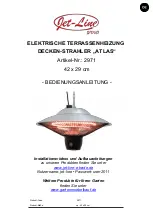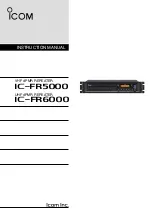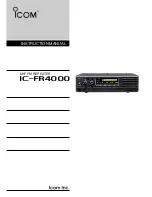
Remove the valve cover by unscrewing the two retaining screws.
Release the test point screws and ensure operating pressures are with-
in the limits specified in section 3 “Appliance data” on page 2 of these
instructions.
The pressure should be checked with the gas heater burning and the
control set to high flame.
The pressure regulator on manual models is preset and locked to avoid
tampering. If the pressure is not as specified in the Appliance Data sec-
tion on page 2, replace the regulator with P/N FT/F730031 Replace the
test point screws after pressure measurement ensuring no gas leaks.
The gap between the
spark electrode and the
pilot should be 1/8” to
3/16” to produce a good
spark. There should be no
need to adjust this. If under
any circumstances the
piezo electric spark fails,
the pilot cannot be lit
manually.
All instructions must be
handed to the user for safekeeping. Show the customer how to light and
control the fire.
After commissioning the appliance, the customer should be instructed
on the safe use of the appliance and the need for regular servicing.
Frequency of service depends on usage, but MUST be carried out at
least once annually.
Advise that cleaning of the fire may be achieved when the fire is cold
using a damp cloth and mild detergent on most surfaces.
Advise that the fire will emit a "newness" smell for a time after initial
commissioning and that extra ventilation may be needed during this
time. Recommend that a guard be used for the protection of the young,
pets, the elderly and the infirm.
Isolate the fire from the gas supply. Ensure that the fire is fully cold
before attempting service. A suggested procedure for servicing is
detailed as follows;
1.
Lay out the dustsheet and tools.
2.
Remove the front section of the frame by following section 8.0
3.
Remove the glass door assembly (4 screws) and clean
carefully.
4.
Inspect the burner and the catalysts and clean if necessary
with a soft brush.
5.
Disconnect the gas supply.
6.
Undo the four screws retaining the burner support brackets to
the base and rear of the firebox.
7.
Remove the burner unit, strip off the burner pipes and clean
thoroughly.
8.
Clean the in-line restrictor, pilot assembly and the burner
tube. Do not attempt to remove the pilot injector as this can
cause damage.
9. Re-assemble
components.
10.
Turn on the gas supply and leak test. Check pilot and
burner for good ignition.
11.
Refit the glass door assembly, ensuring a good seal.
12.
Refit the casing. Refitting is the reverse of removal as
detailed in section 8.0.
13.
Check the purpose provided ventilation is unobstructed.
14.
Light the fire and test setting pressures.
15.
Check safe operation of the appliance.
For specific servicing instructions, see relevant sections.
First, remove the front section of the frame (as per section 8.0), the
glass panel, and disconnect the gas connection inside appliance. The
gas connections to the gas valve can now be released. Undo the four
screws retaining the burner brackets to the base and rear of the firebox.
The burner may now be removed.
Remove the pilot and main burner pipes and blow through to dislodge
any debris. Now remove the inline restrictor and blow through to make
sure it is entirely clear.
Unclip the pilot lint gauze and clean with a soft brush. Clean the exterior
of the pilot assembly with a soft brush and blow through the flame ports
on the pilot head. Check the aeration holes are free from lint or dirt. The
pilot assembly can be removed if required by disconnecting the
electrode HT lead, gas pipe, thermocouple lead and unscrewing the
mounting screws and lifting away.
7
15.0 SPARK GAP
16.0 BRIEFING THE CUSTOMER
WARNING: DO NOT ADD LOGS OR ORNAMENTS
SUCH AS PINE CONES, VERMICULITE OR ROCK
WOOL. USING THESE ADDED ITEMS CAN CAUSE
SOOTING.
17.0 SERVICING
18.0 SERVICING THE BURNER
Figure 9
Spark gap
WARNING: ANY CHANGE TO THIS HEATER OR ITS
CONTROLS CAN BE DANGEROUS.
14.0 GAS PRESSURE CHECK - continued





























